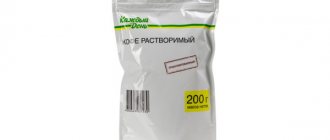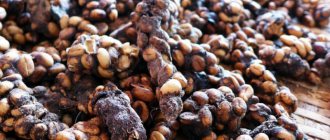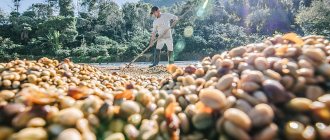Ethiopia is considered to be the birthplace of coffee. However, the people of Yemen were the first to cultivate and grow this plant. There is still debate about whether the first Yemeni coffee plantations first appeared in the 12th or 14th century.
Yemeni coffee is rare and therefore very expensive, but the cost is justified by its high quality. He is still considered one of the best in the world.
Mokhtar Alkhanshali
Modern Yemeni coffee owes a lot to Mokhtar Alkhanshali, who, despite the difficult political and economic situation in the country, managed to export invigorating beans to Europe and the USA. Mokhtar went into the fields with local farmers, taught them modern technologies seen in the West, and worked to improve the quality of coffee in Yemen. In 2015, he risked his life to escape the war-torn country to bring samples of the latest harvest to a coffee conference in Seattle. Coffee from Yemen instantly made a splash, scoring the highest number of points in blind testing.
Mokhtar was born in the United States to Yemeni immigrants. The young man’s ancestors were engaged in growing coffee, and in 2013 the young man decided to revive the family tradition. To achieve this, Mokhtar tirelessly shuttled between Yemen and the United States, establishing trade ties. The entrepreneur was helped by the fact that he spoke the Yemeni language and also shared the culture and traditions of local farmers. On the other hand, in the USA he learned advanced technologies, knew how to cultivate grain and conduct business more efficiently.
Mokhtar Alkhanshali
Now, due to difficulties with transportation and the use of virtually exclusively manual labor, the price of a cup of Port of Mokha brand coffee supplied by Mokhtar can reach up to $16. Thanks to this, farmers in Yemen earn 6-12 times more than their counterparts in neighboring Ethiopia.
Harvesting and processing
In Yemen, berries are picked by hand, 3-5 times per tree per season. Both green and black berries are often harvested, especially late in the season, as payment is generally made by weight. There is also a relatively small premium for ripe berries that have been properly dried, but it is small and usually amounts to no more than 10-20%. Farmers do not have the knowledge, resources and normal motivation to strive to collect only ripe berries and process them correctly.
Quality control occurs either at the processing station or by the exporter, who no longer has any other capabilities for this except grading, sorting, removal of foreign objects and defective grains. It is at this stage that low quality coffee is separated and sold to the domestic or regional market.
Farmers mostly dry their coffee on the roofs of their houses. There is not enough space, and you have to dry the berries in several layers. Not all farmers realize the need to constantly turn the berries, which leads to increased drying time, uneven drying, excessive fermentation and even the formation of mold.
Farmers rarely carry out halling; it is usually carried out by large trading companies and exporters. Most often, a primitive device is used for halling, consisting of a large disc-shaped stone driven by a simple mechanism. Many hallers are poorly calibrated: the stone removes the dried skin only from small grains, and breaks large ones. The consequences of this are noticeable in the amount of broken beans in green coffee.
Mocha
In modern interpretation, the term “mocha” means a mixture of coffee with hot chocolate or espresso with chocolate syrup. In fact, this is a unique variety of Yemeni coffee, named after the port city through which aromatic beans were transported to other countries.
Mocha coffee belongs to the Arabica class and is cultivated in the vicinity of the capital, Sana'a. Another name for the variety is Yemeni Udaini, it has a natural chocolate flavor, a price reaching up to $240 per pound and is considered one of the best coffees in the world.
Yemeni mocha
Adding to the confusion is Ethiopian Harrar coffee, which is also often marketed under the name “mocha” or “moka”. Despite the fact that the varieties are indeed similar, the Ethiopian counterpart is lighter in body.
Climate of Bani Matar
Yemen is located in the northern tropical zone and has an arid climate, but high in the mountains it can be quite humid. Bani Matar is cold and dry in winter, with temperatures dropping to almost zero degrees. In summer the air warms up to 30 degrees, humidity is moderate.
Obviously, the climate, which is quite harsh for Arabica, leaves its mark on the taste characteristics of Yemen Matari: the berry, resisting stress, forms a more intense taste.
Coffee in Bani Matar is grown in places such as the Boglan Valley, Beit Al-Razqi, Al-Ghudmah, Hayet Al-Jalb and Saih.
Characteristics of coffee from Yemen
Yemeni coffee has a rich bouquet with notes of tropical fruits, flowers and spices. There are varieties with earthy, woody and tobacco accents.
Types of Yemeni coffee:
- Udaini (Mocha);
- Dawairi;
- Tufahi;
- Bura'ai;
- Abu Sura.
In addition, there are literally hundreds of local names used in the home market, sometimes with dozens of designations for a single variety, and whether they refer to a bean type or region of origin can never be said with certainty. The beans are processed using the dry (or “natural”) method, when the coffee cherries are first dried in the sun (often right on the roofs of houses), and only then peeled from the pulp and skin.
The country's coffee industry is represented by small farms, most of the plantations are located on mountain terraces. Local grains tolerate drought well and produce abundant harvests even in hot climates.
Famous brands of Yemeni coffee: Volcanica, Port of Mokha, Sweet Maria's.
History and features of production
The first coffee plantations appeared in the country in 1100. This state was the first to export coffee products, but could not maintain the monopoly. Soon, coffee production became popular in many parts of the world, and Yemen lost its leading position.
An underdeveloped country with water supply problems could not cope with the competition. Already in the 17th century, plantation areas were reduced. In the 20th century, no more than 11 thousand tons of coffee fruits were grown annually in Yemen. Of this, about a third is consumed by state residents.
Despite this, Yemeni coffee continues to be valued around the world. It has an unsurpassed aroma and multifaceted taste.
Yemen is considered the only country where 100% organic Arabica beans are grown to this day.
Pesticides and chemical fertilizers are not used on the plantations. The fruits are collected by hand. After this, perform the following steps:
- For three days, the fruits are dried on dishes placed on the roofs of houses.
- After this, they are moved to a dark room.
- After a while, they are again laid out in the sun.
- Dried berries are cleaned using a millstone.
- The crop is then tossed so that the husks are collected at the edge. This makes it much easier to remove debris.
- The cleaned grains are placed in baskets.
The only innovation over the past 500 years is the construction of greenhouses. Tree seedlings are grown in them until transplantation.
Regions
- Bani Mattar. The local coffee is called Mattari, grows at an altitude of about 1400 meters, has a distinct sourness, wine notes and a complex fruity aroma.
- Hiraazi. The coffee is similar to Mattari, but lighter in body.
- Ismaili. Delicate and soft coffee with a berry flavor is produced here.
- Sanani. Coffee of lower quality compared to other regions is characterized by a medium body, a balanced profile, and a fruity taste with almost no sourness.
Mocha is a bean variety that can be cultivated in any region. Mocha Mattari is considered the most delicious.
Cooking methods
To prepare real Yemeni coffee, you first need to fry the fruits along with the shell on a baking sheet, and then grind them in a mortar. The resulting powder is placed in a pot of water and brought to a boil twice. When performing these steps, you will be able to get a thick and strong drink. Ginger, salt and cloves are added to it.
You can make Yemeni coffee at home using the following recipe. The following ingredients are needed:
- 2 teaspoons of ground grains;
- a pinch of chopped ginger root;
- 2 teaspoons sugar;
- 120 ml water.
Preparation comes down to the following steps:
- Place all the products in a pot and pour water into it.
- Heat the liquid until foam appears and immediately after that remove the cezve from the stove.
- Strain the prepared drink.
Incredibly tasty and aromatic coffee is grown in Yemen. The peculiarity of this country’s coffee products is the use of ancient technologies and manual processing of beans. In addition, no chemicals are used when growing fruits. These factors are often decisive when choosing.
Ethiopia is considered to be the birthplace of coffee. However, the people of Yemen were the first to cultivate and grow this plant. There is still debate about whether the first Yemeni coffee plantations first appeared in the 12th or 14th century.
Yemeni coffee is rare and therefore very expensive, but the cost is justified by its high quality. He is still considered one of the best in the world.
History and features of production
It is not known for certain, but Arab sources indicate that coffee trees were grown in Yemen as early as 1100. The export of fertile coffee beans was prohibited. Thanks to this, this Arab country became the first exporter of coffee beans. But she failed to maintain the monopoly.
Enterprising traders around the world quickly realized the benefits of its production and sale, and began to develop extensive coffee plantations. At the end of the 17th century, Yemen completely lost its leadership position in the world coffee market and today is among the fifth ten exporting countries.
The development of this Arab country, including the growth of cities, a decrease in land suitable for agriculture, water supply problems, as well as great competition among producing countries, led to the fact that in the 20th century no more than 11 thousand tons of coffee were grown in Yemen in year. Of this amount, more than 30% is consumed in the domestic market.
But despite all this, Yemeni coffee is still valued all over the world for its exquisite taste and unsurpassed aroma. After all, this is the only country that produces 100% environmentally friendly Arabica beans. The process of growing coffee trees here is still the same and occurs without the use of fertilizer chemicals or pesticides .
Yemeni coffee is harvested in the fall and only by hand. After harvesting for 3-4 days, the grains are dried and aired on large dishes that are placed on the roofs of houses. Then the raw materials are put into a dark room so that the beans “absorb the sun”, and after a while they are sent back to the sun’s rays.
They peel the dried coffee berries with millstones, and then on a large dish the women begin tossing the raw materials so that the husks collect at the edge, which makes it easier and faster to remove all the debris. Clean grains are distributed into baskets. The only innovation in fruit processing for more than 500 years is the emergence of greenhouses where coffee sprouts are grown before they are transplanted.
The plantations themselves are also noteworthy. Coffee trees in Yemen grow at an altitude of 1000-2000 meters at equal distances from each other on steep mountain slopes in the shade of fruit trees, protecting them from sunlight and strong winds.










